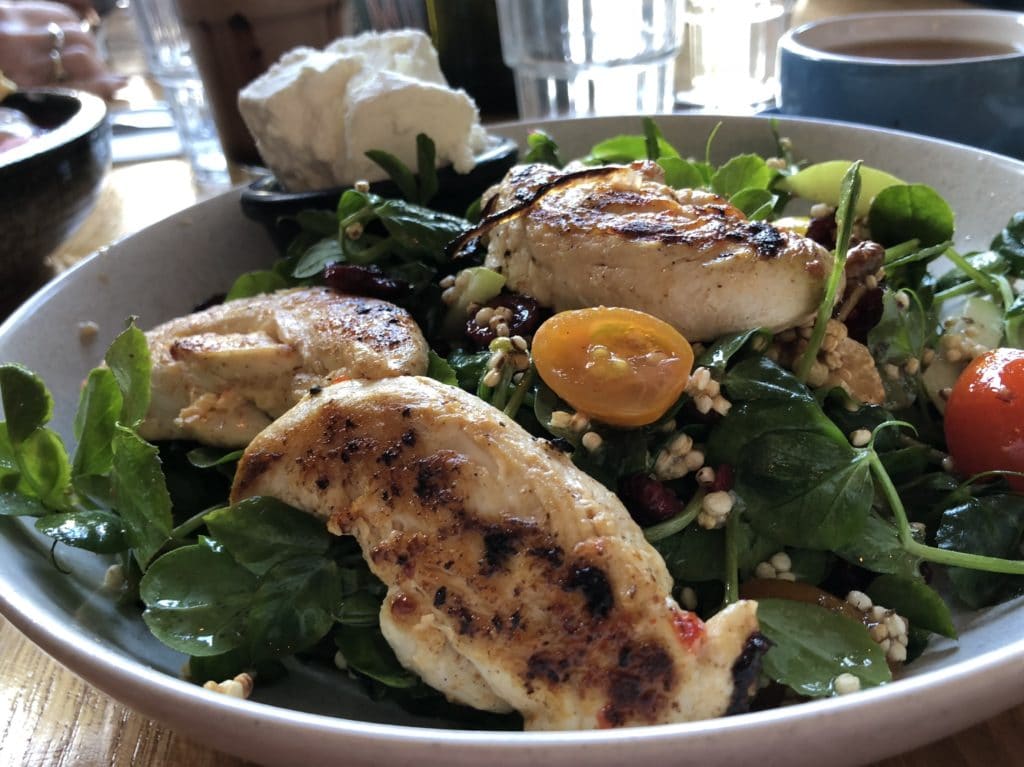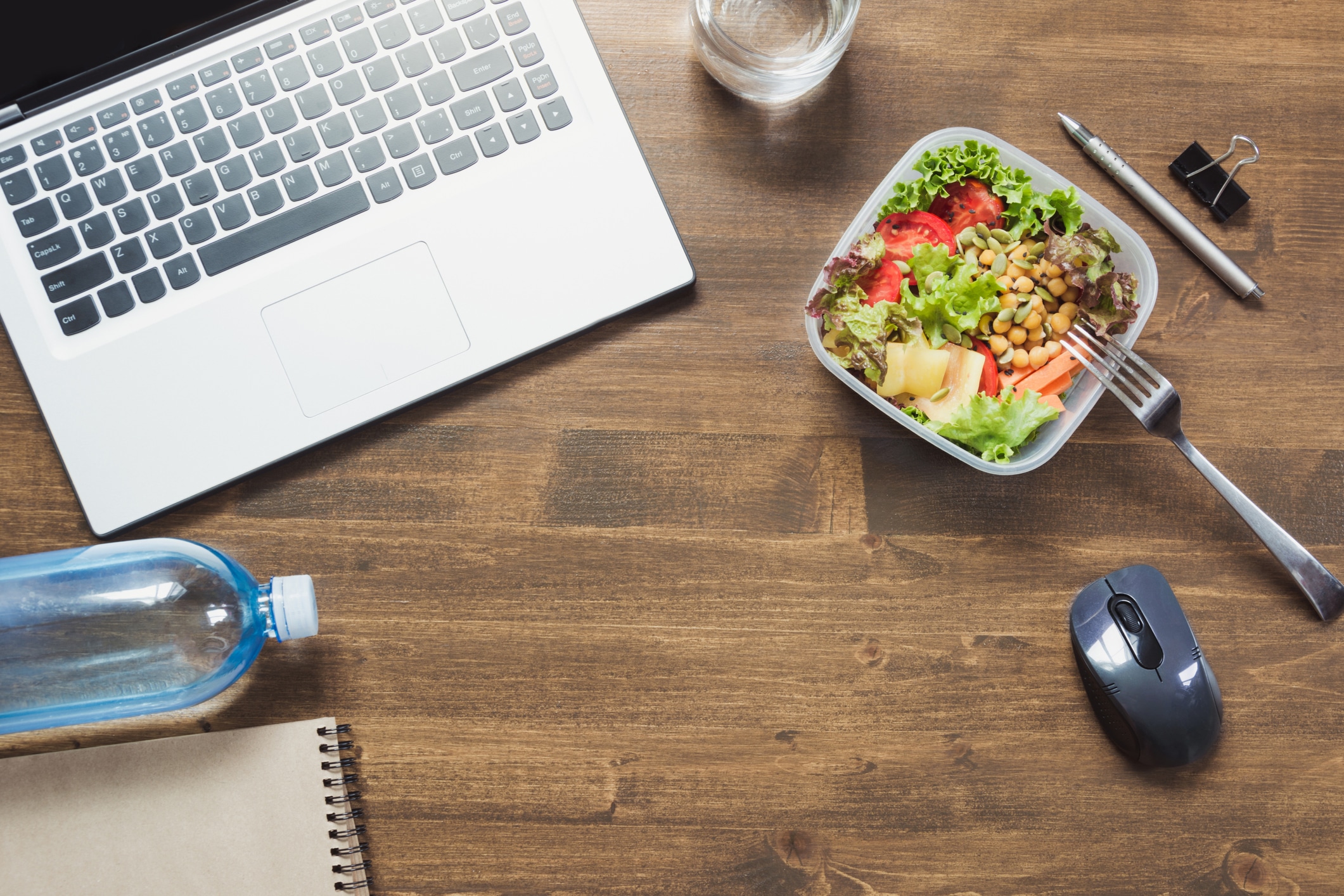With so many of us stuck working or schooling from home, staying productive and motivated outside of the office or classroom can be a challenge. Often overlooked are consistent, nutritious meals throughout the day, which is a problem since what and when we eat has a huge impact on our energy, ability to focus, and ultimately our productivity.
The Pitfalls Of Convenience

Between school and work, lunch has been taken care of for us for most of our lives, and adapting to working from home has presented new challenges in feeding ourselves mid-day. What once felt routine — waking up at the same time, commuting to work, scheduled breaks, is now replaced by increased time behind the screen and less structure around our day and our meals. So now, we end up simply “forgetting” to eat or scrounging together a ‘meal’ using whatever we can quickly get our hands on between zoom meetings, but we often make poor decisions when we rely on convenience, which has adverse effects. Powering through the day may make us feel more productive, but we ultimately end up hitting a wall.
Why Skipping Lunch Is A Mistake
While lunch is often downplayed by the idea that it needs to be quick, rushed, and jammed into our day, the fuel it provides is extremely important for setting us up for a productive afternoon. Failing to recognize this can sabotage your afternoon productivity and even be the cause of evening overindulgence or stress eating later in the day.
Have you ever experienced that “2 pm feeling?” The yawns, energy crashes, and cravings for that next pick me up? (Think: coffee, chips, candy) That feeling is directly related to what you consumed for lunch. Skip lunch and you could get into more trouble later in the evening. If we don’t eat enough throughout the day, we tend to make up for it later. So if you’ve skipped lunch then overdo it on evening snacks, there’s a biochemical reason as to why. Focus on your meals throughout the day and you’ll be less likely to overindulge at night.

There are several important things to take into account when it comes to nutrition, productivity and focus. While they don’t necessarily seem connected, they most definitely are. What you’ve eaten throughout the day plays a huge role in your ability to concentrate.
Blood sugar: When we consume high sugar and high carbohydrate foods, we tend to experience fluctuations in blood sugar that can cause fatigue, lack of focus, and make us feel hungry (or crave more sweet, carb-rich foods). Low blood glucose also reduces our self-control, making it harder to say no to those more indulgent foods. To combat this, it is ideal to focus on having a source of protein and/or healthy fats with every meal and snack. This means paring your fruit with some nuts, cheese, avocado, or other protein-rich food such as fish, chicken, or even beans. This helps to taper our body’s blood sugar response, keeping us full and focused for longer. Think a serving of roasted veggies with chicken breast and avocado, a big salad with leafy greens, salmon, and olive oil dressing, or a grain bowl made with fiber-rich grains, veggies, and chicken or protein of choice.
Nutritional deficiencies: Many nutrients are critical for proper brain function and energy levels. B vitamins, like those found in many of our fruits and vegetables, dairy, and protein sources, are critical for our energy production systems. Other nutrients, like omega 3 fatty acids, vitamin C, and vitamin D can be important for proper brain function and are important to gain through the diet.
Lunchtime Facts
My general rule of thumb is that you should be eating every 3-4 hours to maintain blood sugar levels. More importantly, having lunch on a similar schedule can be helpful to support your blood sugar and your body’s natural stress response. Generally, between 12-1 pm is an appropriate time to have lunch. Waiting too long between meals can also cause low blood sugar, which is what leads to poor choices. That means that for some, a small afternoon snack consisting of proteins and healthy fats may be helpful to stave off decreases in energy and productivity to get through the afternoon.

The best lunch is made up of a few different components: protein, healthy fats, fiber, and vegetables. So, why these 4 food groups?
- Protein helps stabilizes blood sugar and keeps energy even keel throughout the afternoon. Protein also provides key amino acids that support the brain and aid in muscle and bone health.
- Healthy fats provide a source of energy that slows our metabolism of foods. Fats are critical for the absorption of key nutrients that support the brain, and also support hormone production (including our stress hormones). Omega 3 fats are also especially important as they provide key building blocks for the brain.
- Fiber also helps to keep us full and satisfied for longer. Fiber can be found in veggies or in grains like brown or wild rice, or ancient grains like quinoa and sorghum, to name a few.
- Veggies — Since lunch makes up roughly ⅓ of our food intake for the day, I recommend making sure you’re getting 1-2 cups of veggies at lunch. The minimum daily recommendation is 2.5-3 cups per day, but I recommend even doubling that if possible! If we skip veggies at lunch, we’re missing a big opportunity to get one of our most nutrient-dense food sources. Veggies also provide the vitamins and minerals needed to support energy production and brain function.
Winning WFH Lunches: Easy, Healthy & Delicious
My overall recommendation is to do as much prep as you can ahead of time so when 12 p.m. hits you’re simply in “assembly” mode vs. chopping, cooking, and cleaning mode, because who has time for that in-between meetings?

One-pan lunch (or dinner leftovers)
I am a big fan of a “set it and forget it” method, like the crockpot. But a sheet pan lunch can be a great way to get your fill of protein and veggies without having to stand over the stovetop. Preheat the oven to 400 degrees and fill a pan with chicken breast or fish and an array of veggies (I like to do sweet potatoes and brussels sprouts), toss with olive oil and spices of choice, and roast for about 30 minutes. Set this up before you take your break for lunch so you’ve got time to grab an outdoor walk before heading back to the computer.
Chopped Salad
Chop everything in advance (the night before, or everything on Sunday for the whole week), so you can just toss together, add protein, and top with dressing. My favorite is a quick homemade dressing of olive oil, apple cider vinegar, a hint of dijon mustard, salt, and pepper. You can also find great pre-chopped salad mixes at the grocery store if you’re really in a time crunch. I recommend swapping out the packaged dressing for your own healthier vinaigrette.
Try A Meal Plan
There are a number of services that deliver ready-to-eat or easy-to-prepare meals straight to your doorstep. You can find one to fit just about any taste or dietary preference — whether you’re following a lifestyle that’s gluten-free, vegetarian, paleo, keto, etc. No running to the store, chopping or cleaning required. These services are convenient and a great choice for people who want to eat healthier, but just don’t have the time or patience to see it through.
We’re navigating tough times, so the bottom line is, be kind to yourself. Start by adding a few more fruits or veggies into your diet, chopping up some healthy choices in advance or eating lunch at the same time every day. Even small steps can lead to big benefits.

Dr. Brooke Scheller, DCN, CNS
Director of Nutrition at Freshly
Clinical nutritionist, wellness expert, and foodie passionate about changing the way people feel about the food that they eat. Brooke is on a mission to convince people to eat more vegetables and less junk through simple changes and small steps daily. During her studies for her doctorate in clinical nutrition, Brooke found that while many people needed in-depth analysis and personalized recommendations, the majority of the population could benefit from just starting with the basics: more real food, less junk food. And thus, she began a revolution to empower people towards better choices and more vegetables in their everyday lives.


